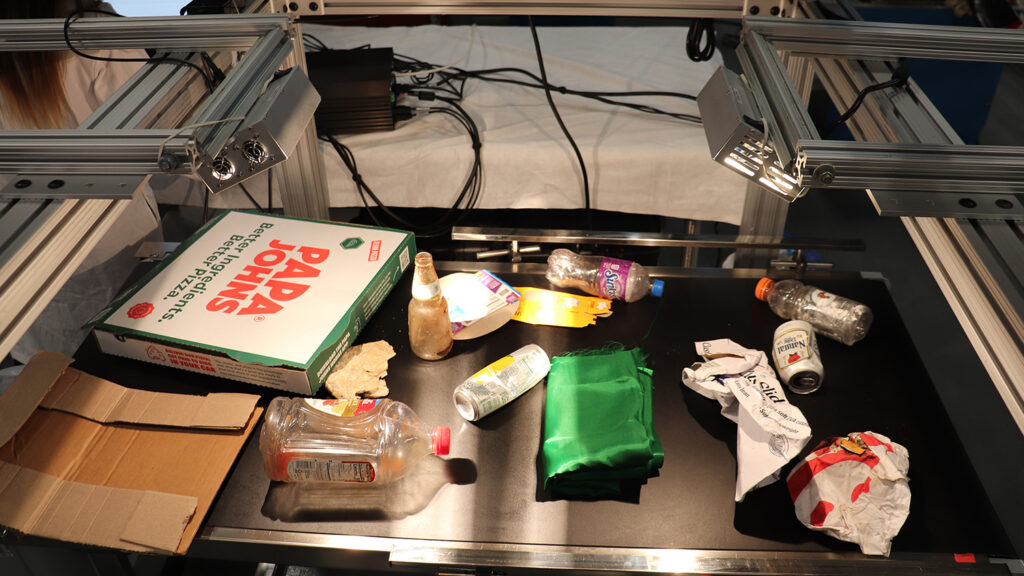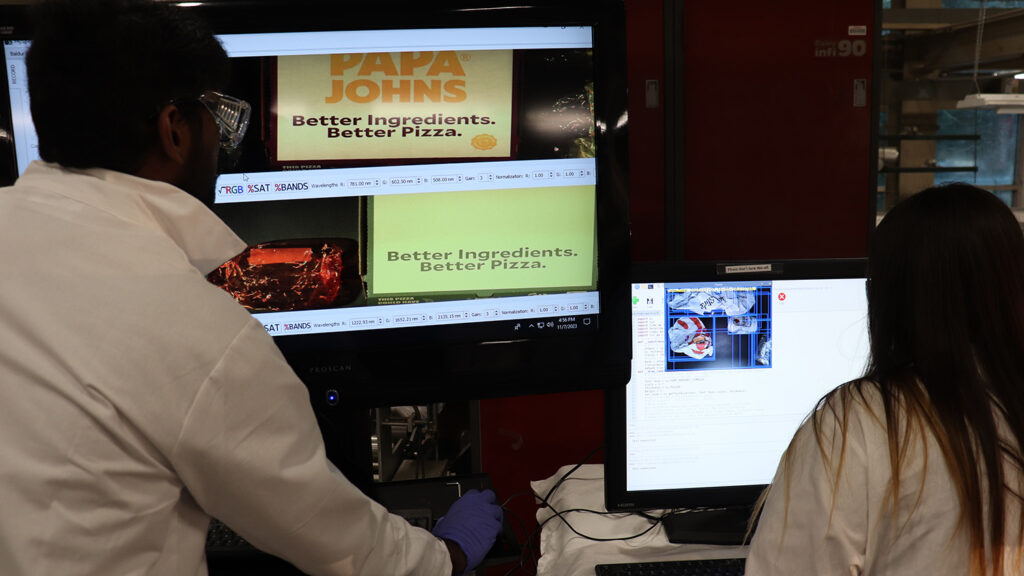AI-Powered Waste Management System to Revolutionize Recycling
The system is expected to streamline the collection of non-recyclable waste for conversion into renewable products, energy and fuel.

Americans generate more than 290 million tons of municipal solid waste each year — that’s all the packaging, clothing, bottles, food scraps, newspapers, batteries and other everyday items that are thrown into garbage cans.
Some of that waste is recycled, composted or burned for energy, but nearly 50% of it is sent to a landfill where it slowly decomposes and emits greenhouse gases that account for about 25% of today’s global warming.
With support from the U.S. Department of Energy, NC State researcher Lokendra Pal has partnered with the National Renewable Energy Laboratory, IBM and the Town of Cary to solve that problem.
Pal, the EJ Woody Rice Professor in the Department of Forest Biomaterials, is working with his collaborators to develop a “smart waste management system” for the collection, identification and characterization of organic materials in non-recyclable waste.
Non-recyclable waste includes items that are too contaminated for recycling, often because they contain organic materials such as oil, grease and dirt. The researchers want to convert these materials into renewable products, energy and fuel.
“The sustainable utilization of non-recyclable waste will empower businesses to utilize it as a renewable carbon resource and will support them in the journey toward a low-carbon economy,” Pal said.
In developing the “smart waste management system,” Pal and his collaborators are integrating smart sensors, visual cameras and hyperspectral cameras with an automated waste sorting machine to examine non-recyclable waste items.

The visual and hyperspectral cameras will capture images of the items as they move along a conveyor belt, while the sensors will help to monitor and control the waste management process.
Most objects absorb and reflect light. Digital cameras can only visualize three color bands of light — red, green and blue. Hyperspectral cameras, however, can visualize many more bands from across the electromagnetic spectrum, resulting in images that showcase chemical characteristics that would otherwise be invisible.
“By combining hyperspectral imaging with visual cameras and smart sensors, we can collect data in real-time to improve the process of characterizing and separating waste so that it doesn’t end up in landfills,” Pal said.
Pal and his collaborators are also analyzing non-recyclable waste items to determine their physical, chemical, thermal and biological properties, including moisture, density, particle size and distribution, surface area, crystallinity, calorific value and more. This information will help the system to further differentiate items as they’re scanned.
The researchers plan to upload this metadata information, along with the images and descriptions of the items, to a cloud database to train and test machine learning models that can be integrated with the system’s cameras to improve the recognition and classification of non-recyclable waste.
A machine learning model is a type of artificial intelligence that analyzes data to identify patterns, make decisions and improve themselves. In the case of Pal’s research, the models will analyze the uploaded images and descriptions of non-recyclable waste — and the information about its physical, chemical and biological properties — to determine contaminants, energy density and organic content.

“If successful, this project will contribute significantly to the development of commercially viable, high-performance renewable carbon resources for conversion to biofuels and valued-added products,” Pal said.
Pal and his collaborators are exploring the use of various processes and technologies to produce fuels such as bioethanol and aviation fuel, which can be blended and used as sustainable fuel in the transportation industry, and products such as biochar, which can be used in agriculture to enhance soil fertility and improve plant growth.
Going forward, the researchers plan to evaluate the technical feasibility and environmental performance of their proposed system at pilot-scale. They also plan to develop a web platform that will enable them to share datasets and other information with stakeholders.
“In sum, our approach supports the development of sustainable solutions for waste valorization, optimizing resource recovery, minimizing waste generation, reducing emissions, and mitigating environmental impacts while engaging municipalities and industries across the supply chain,” Pal said.
- Categories:


